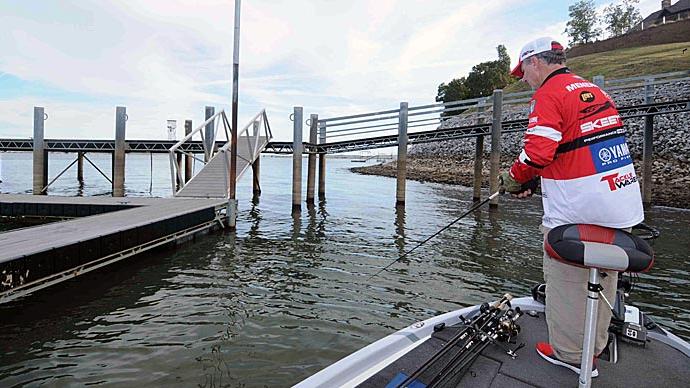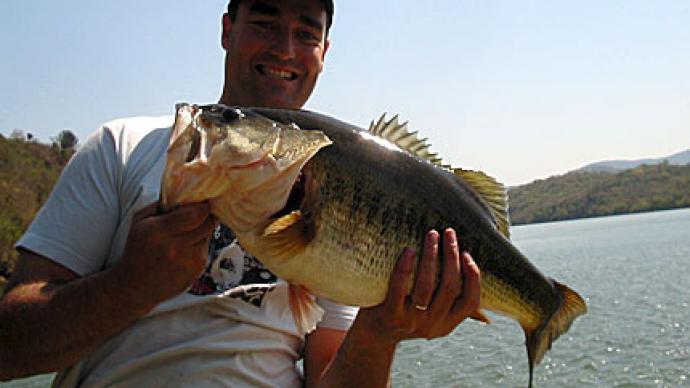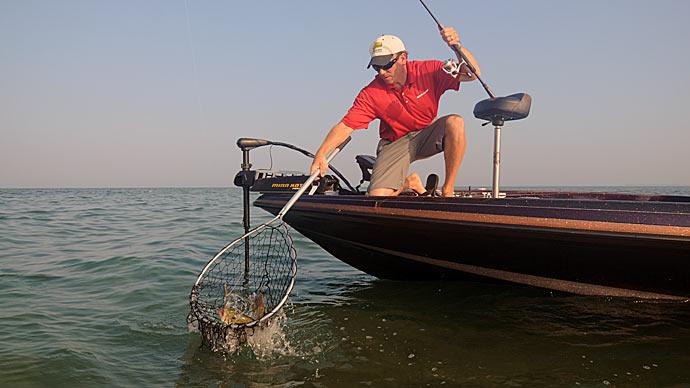
One of the most challenging fishing situations an angler can face is when bass are suspended away from the bottom. But that doesn’t mean they’re impossible to catch.
Bass suspend more than they relate to bottom or cover, and we catch more of them than we realize. For example, bass hold under the floating sections of docks that extend over deep water, suspend under lily pads, and even float off the bottom in the tops of shallow bushes. Those fish are very catchable if you use the proper tactics.
It’s not unusual to find a lot of catchable suspended bass during the fall when fish follow schools of baitfish into the backs of creeks and coves and feed aggressively. Even though they’re suspended 3 or 4 feet below the surface in 10 feet of water or more, you can catch them on shallow crankbaits, jerkbaits, spinnerbaits, and lipless crankbaits.
The worst condition you’ll encounter is when fish suspended off main lake points aren’t relating to any particular cover or structure. Those fish rarely want to bite anything.
That happens a lot during weekends on reservoirs used to generate electricity. When the generators are running, and current is pulled through the lake, which happens most often on weekdays, the baitfish and bass move tighter to the structure. But on weekends, when there’s little current, the fish roam and suspend away from the areas bass fishermen like to target.
When confronted with suspended bass, I go looking for those areas where the bass are suspended close to cover or structure. It’s been my experience that they’re a little easier to fool than those hovering over deep water and not relating to anything.
In any case, you have to use special tactics. For example, it’s essential to make longer casts to bass suspended in cover. When fish see the boat, they become edgy and less inclined to bite—also, suspended fish often school toward the boat when you hook one fish. When that happens, the school scatters and becomes even more challenging to catch.
For bass suspended in open water, finesse lures are more effective than large, bulky baits. You need a lure that will hold in the strike zone longer, such as a grub or jigging spoon or a slow-falling jig or worm.
Once you identify the depth the fish are holding, you can make a long cast and count it down. If the fish are extremely deep, you can get over them and jig the baits vertically. That technique has been highly successful for Western anglers fishing the steep bluffs of canyon lakes where bass suspend over deep water next to the bank. Anglers drop finesse lures on light line and shake them in the face of the suspended bass. This doodling technique works well on clearwater lakes when bass are suspended deep.
Admittedly, targeting suspended bass isn’t as easy as using more conventional methods. But when you’re dealt those conditions, choose areas and techniques that will work to your best advantage.
For more articles, quick tips, and much more, visit HankParker.com.




